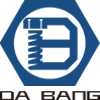DIN 137 wave washers play a key role in pressure compensation and anti-loosening and shock absorption in mechanical connections. Its unique wave-shaped structure effectively compensates for the attenuation of preload caused by temperature changes or vibrations by forming elastic deformation in the axial direction. Typical applications include motor end cover seals, automotive suspension systems, pump valve flange connections and other occasions with periodic loads. According to the DIN 137 standard, the thickness of common wave washers is between 0.5-3mm, the number of wave peaks is 4-8, and the free height is generally 1.5-2 times that of flat washers. For example, when the installation compression of M12 wave washers is controlled at 0.3-0.8mm, the best elastic effect can be provided.
The mechanical properties brought by this special shape make it outstanding in three aspects: first, the alternating structure of wave peaks and troughs provides axial elasticity, which can automatically compensate for about 15%-25% of the displacement when the bolt preload decreases; second, the wave-shaped contact surface increases the friction coefficient, which improves the anti-loosening performance by about 30% compared with flat washers; third, its elastic deformation capacity can absorb 20%-40% of the vibration energy of the equipment. However, due to the limitation of structural strength, corrugated washers are usually only suitable for medium and low load scenarios. The continuous working pressure is recommended not to exceed 500MPa. Overload will cause the corrugated structure to collapse and fail. When selecting the project, when there is an assembly gap of 0.1-0.5mm at the connection part or the operating temperature changes by more than 80℃, corrugated washers should be given priority.
The production process of corrugated washers mainly relies on precision stamping technology. The materials are mostly cold-rolled steel strips or alloy strips, and the thickness tolerance is controlled within ±0.02mm. The production process includes four major links: unwinding and leveling, continuous die stamping, heat treatment and tempering, and surface treatment. In the stamping process, carbide dies are used for multi-station forming. The wave crest forming angle accuracy is required to be ±1°, and the wave height error does not exceed ±0.05mm. . The surface treatment is selected according to the needs. When the thickness of the electroplated zinc layer is 8-12μm, the neutral salt spray test can reach 240 hours without red rust, and the Dacromet coating can achieve 480 hours of protection.
When used with bolts and nuts, corrugated washers are usually installed at the nut end or the bolt head end. When used with high-strength bolts, the matching relationship between the preload and the washer stiffness needs to be calculated-for example, when the M16 bolt is applied with a preload of 250kN, the corrugated washer with a stiffness coefficient of 80N/mm can compensate for about 0.6mm of relaxation. In a vibrating environment, it is recommended to use a combination of “bolt + flat washer + wave washer + nut”. The flat washer can disperse the contact stress, and the wave washer provides continuous elastic compensation. Pay attention to the direction of the wave when installing, usually the convex surface faces the fastener.
There are two main types of wave washers on the market: single wave and multi-wave structure. Single wave washers (such as DIN 137A) provide a large elastic stroke and are suitable for scenarios with high axial displacement compensation requirements, but their radial stiffness is low and lateral deformation is prone to occur in connections with torques exceeding 50N·m. Multi-wave washers (such as DIN 137B) adopt a staggered peak design with a peak angle of 45°. Although the elastic stroke is reduced by about 20%, the radial stability is increased by 50%, making them more suitable for rotating parts that are subject to complex stress. In terms of materials, carbon steel wave washers have a lower cost but poor corrosion resistance; stainless steel 304 material can extend its life by 3-5 times in a humid environment, but the elastic modulus is reduced by 15%, and compensation must be reserved during design.
Wave washers are the main products of DABANG fasteners. DABANG Fasteners is a professional fastener manufacturer and supplier. We have more than 90 sets of production equipment, more than 150 employees, and more than 6,000 square meters of production space. The company has passed ISO9001/ISO14001/ISO45001/SGS certification, and the company’s products have also passed the national testing. If you cooperate with us, you will get professional advice and service, quality products, and competitive prices.
Contact us, Speak to your fastener expert
Post time: May-09-2025
